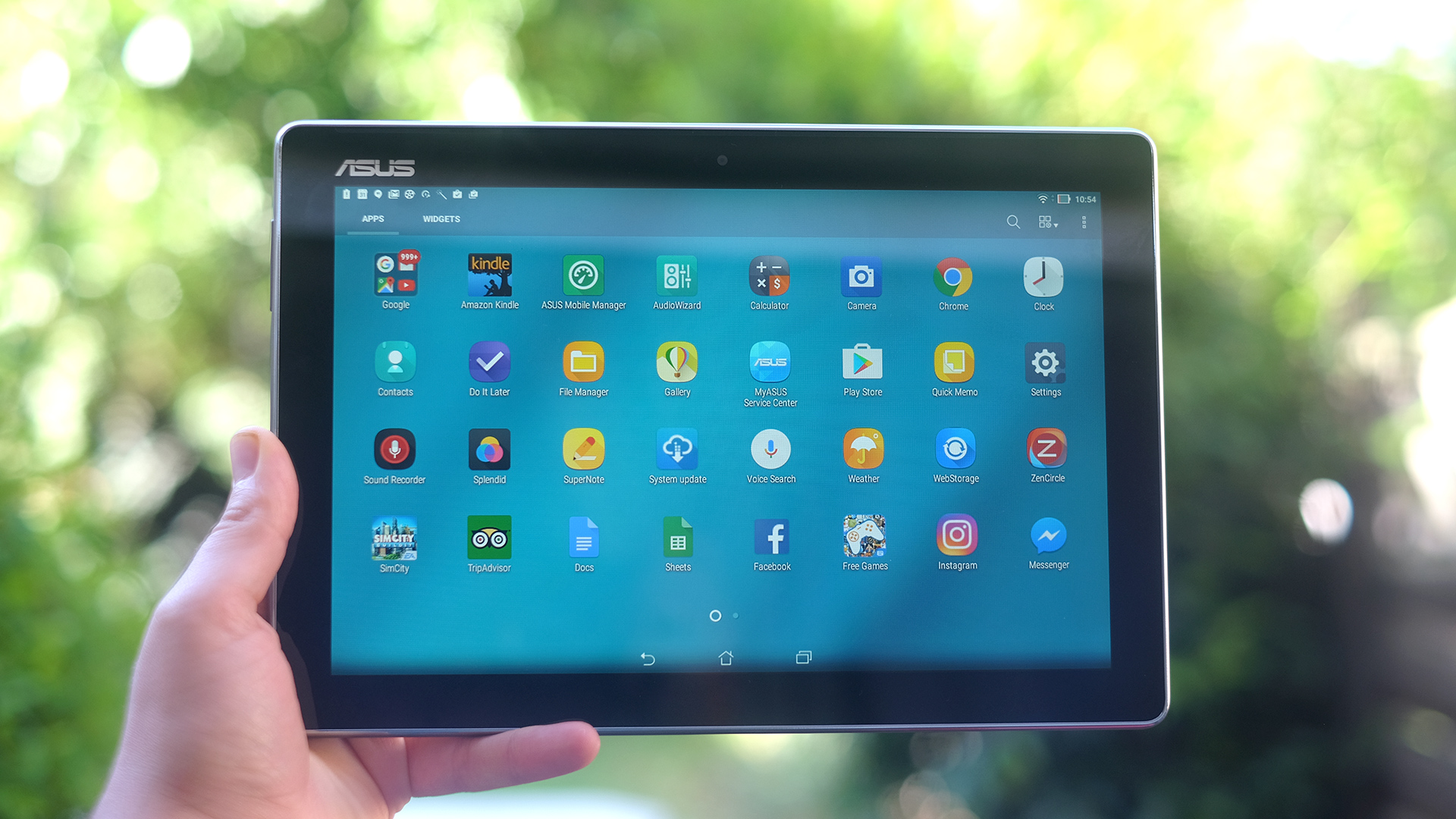Why you can trust TechRadar
- Dated interface design
- Lots of unwanted apps
Like all of Asus's own-brand tablets, the ZenPad 10 Z300M has a custom interface plonked on top of Android. In this case it's Android Marshmallow: not the latest version by any means, but at least we're not stuck with Android Lollipop.
Asus's Android interface is among the more disruptive, significantly changing the look and feel of the system even though the basic layout remains the same. You have home screens, you have an apps menu, and the amount you have to skip between them depends on how much you curate your home screens.
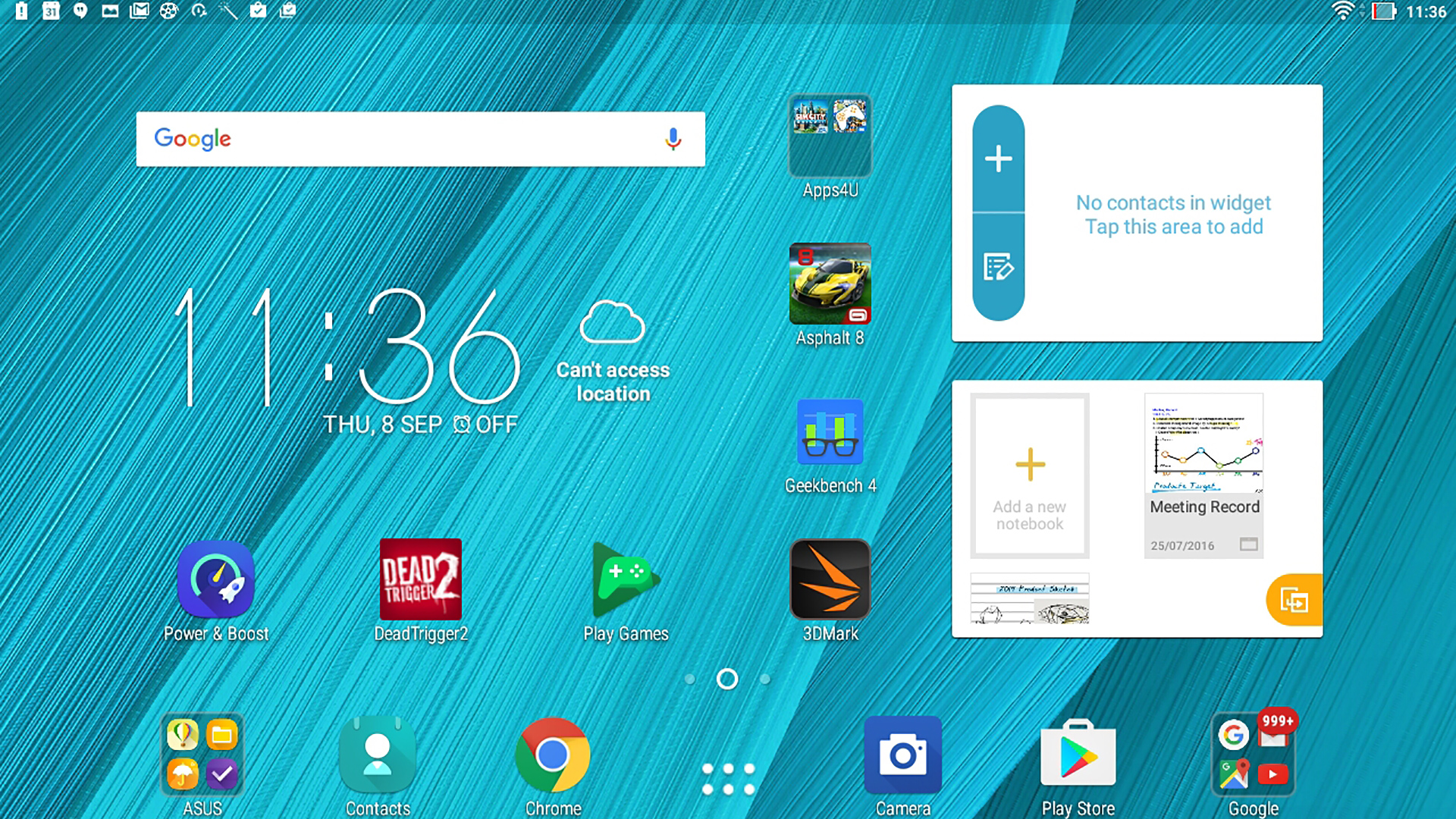
The Asus ZenPad 10 Z300M's interface is a little dated, and has been for a few years now, clearly being based on the aesthetics of Android 4.4 rather than Android 6/7. You get the sense Asus has pumped enough money into the interface to convince itself that building on these foundations is a better investment than a full refresh. We're not so sure.
Android 4.4-a-like elements include apps/widgets tabs on the apps menu, and that the standard home screen transition animation is one of those naff 3D ones. They were popular for a while, a few years ago.
Our first ZenPad 10 Z300M tip: change the transitions back to the "classic" style.
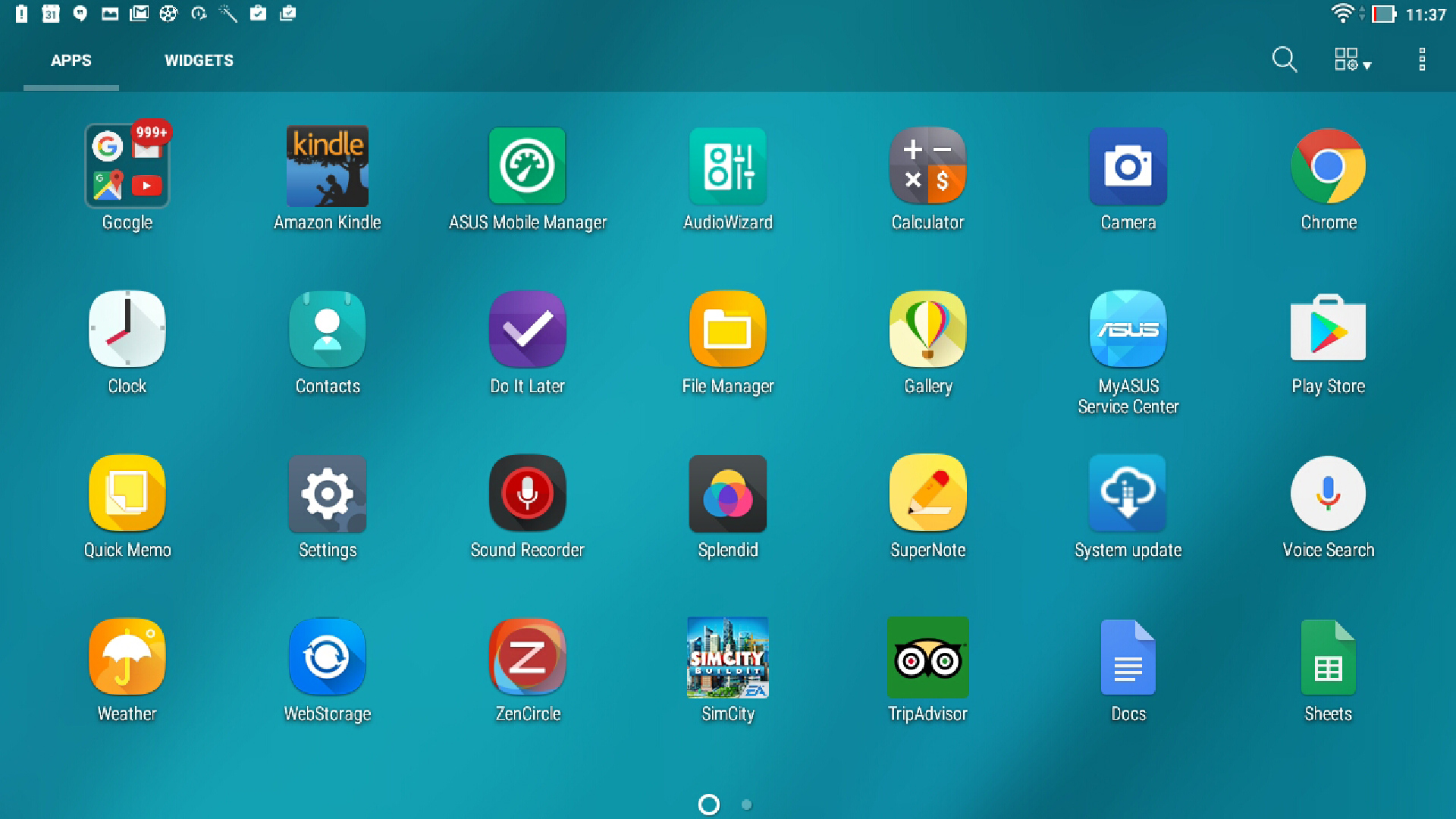
Customization is one welcome benefit that Google has largely removed from stock Android since Android 5.0 (although Android 7.0 Nougat adds some back in), but it's present here. You can alter the scaling of icons, apply themes to give the Asus ZenPad 10 Z300M a one-tap makeover and, of course, play around with those page turn transitions.
The part that tends to turn people off about the Asus interface is the sheer number of extra bits of software packed in. It's like buying a flat decorated to someone else's tastes, because while some of the extras are inoffensive, neutral tools like a file manager, screen customizer and to-do list, others aren't.
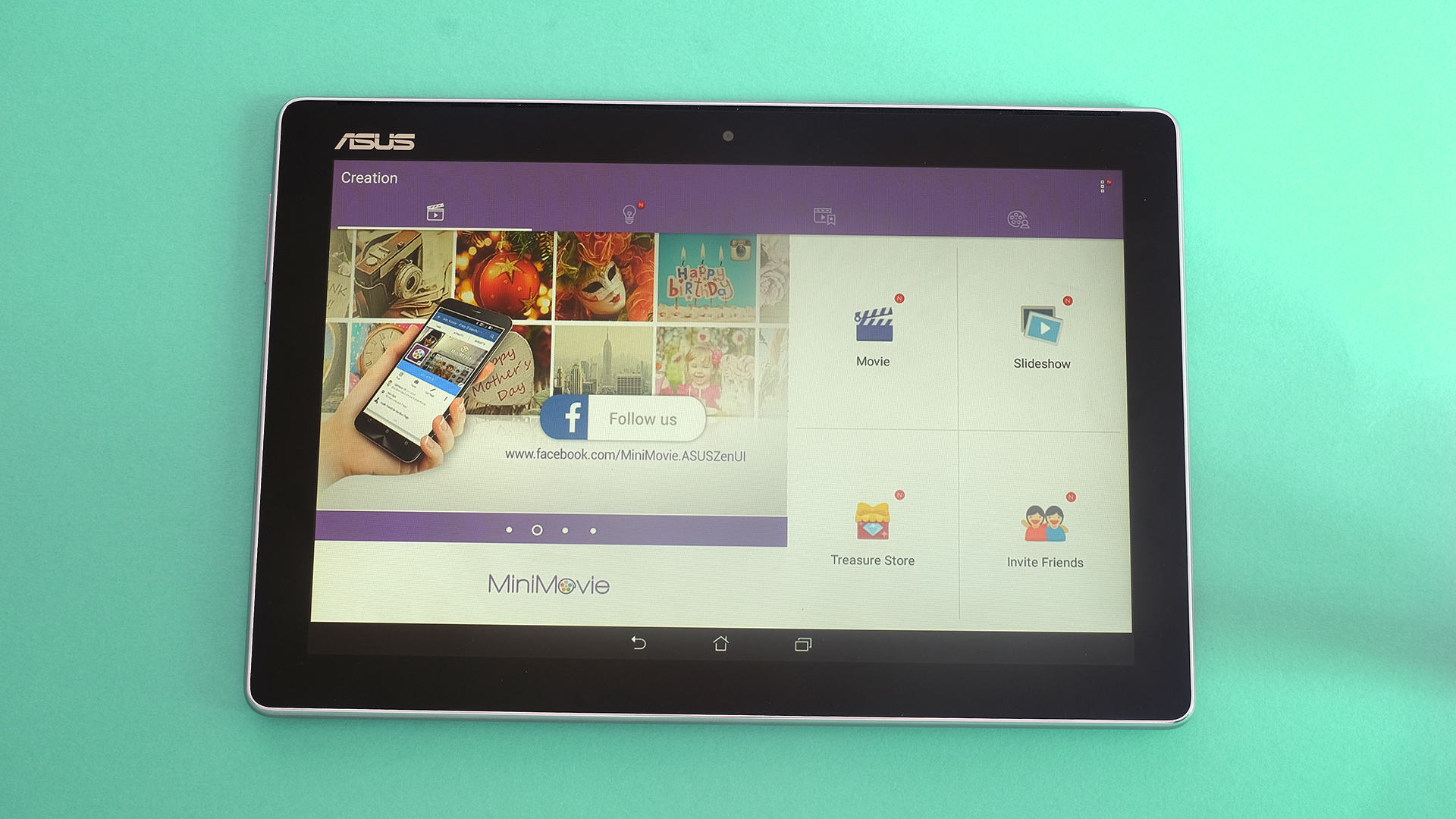
Apps like PhotoCollage and MiniMovie try to "add value", letting you make little photo collages and videos, while ZenCircle is a strange Instagram knock-off. However, they're all a bit rubbish compared to the apps you can download from Google Play.
Asus has also done a deal with EE and Gameloft, that sees some of their apps pre-installed on the ZenPad 10 Z300M. This is a pretty common tactic in cheaper devices, effectively a little advert that helps to subsidize low-cost hardware.
Those gaming apps can be uninstalled at least, but Asus's own ones can only be disabled, meaning they're removed from the app menu but some data remains on the device should you decide to enable them again. From a user's point of view the difference is largely semantic though, given that these are not memory-guzzling apps.
Movies, music and gaming
- Average speakers
- Games run well but look ugly
Given the large harvest of extra apps, it's a little surprising that Asus largely leaves the music/video side to the default Google apps. The Asus Gallery app will play video files, but it's hardly a fully-featured video player.
There are plenty of good music and video player apps to download for free from Google Play though, so this is no great failing.

Once again, the screen is the limiting factor for media. The Asus ZenPad 10 Z300M can only do justice to 720p video, as it doesn't have the pixels to render all the information a Full HD file contains.
Using Netflix, the Asus ZenPad 10 Z300M only seems to receive the SD 480p stream, which is no great surprise when the tablet can't handle the 1080p one. While a well-encoded 720p video will look very good on the ZenPad, the step down to the low-definition stream with Netflix is very obvious.
We'd still take the Asus ZenPad 10 Z300M over the entertainment system of just about any airline, but among tablets it's not great.
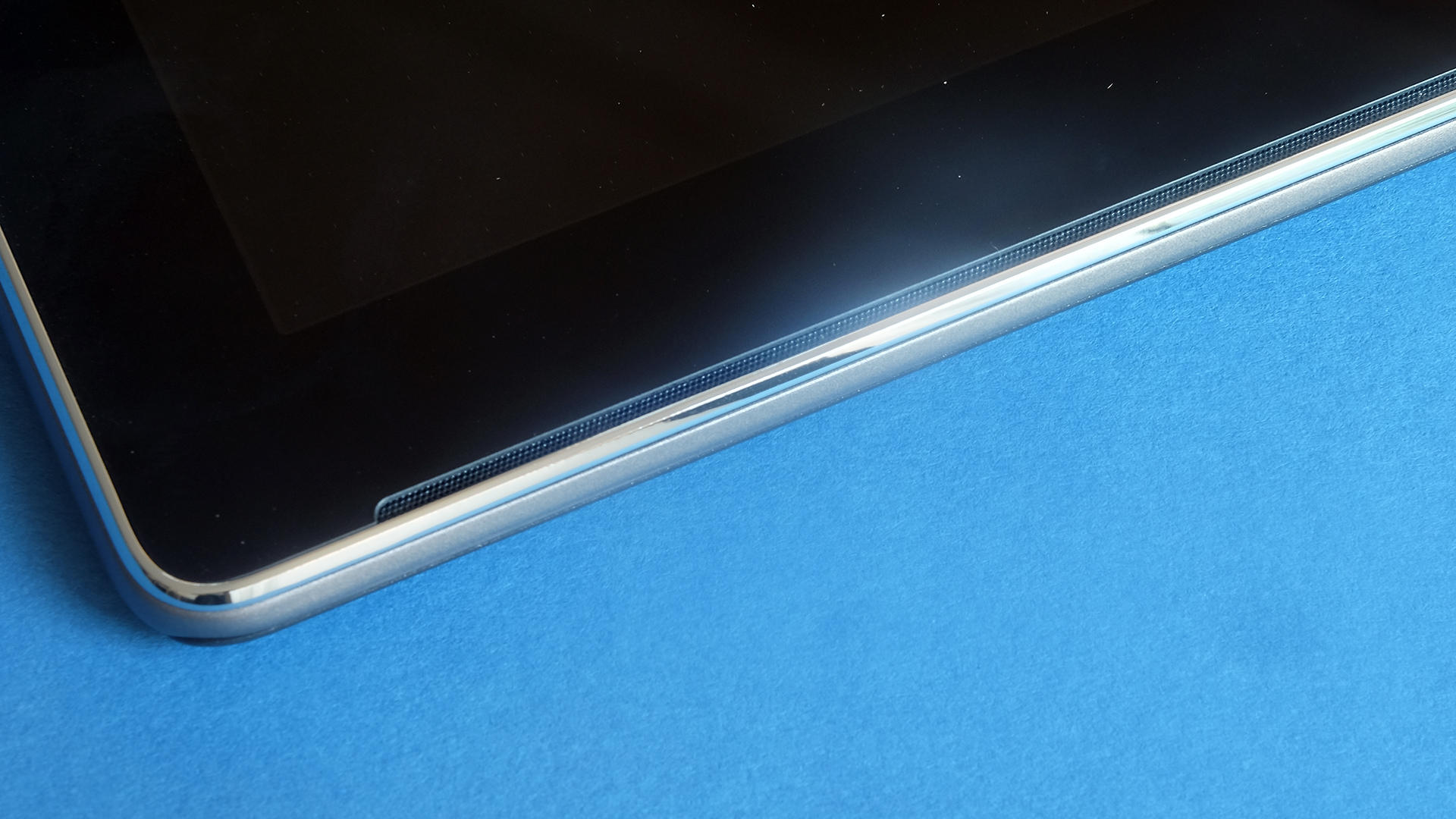
The speakers aren't class-leading either. Their position is good, sitting above the screen in a subtle cut-out. There's one driver at each end, getting you stereo sound when you hold the tablet in front of your face.
The speakers go respectably loud, and the upper mid-range punch stops them sounding entirely tinny, but the sound quality is still a little hard and unrefined. Amazon's Fire tablets, like the Amazon Fire HD 10, sound better.

Gaming is perhaps the entertainment most let down by the screen resolution, particularly as Android games don't tend to use advanced anti-aliasing, which smooths-out jagged edges. The exact titles that you might use to show off a tablet, like Asphalt 8 or Riptide GP, look a bit ropey despite having impressive graphics when played on a higher pixel density device.
The positive side-effect of using a low screen resolution is that games tend to run well despite the Asus ZenPad 10 Z300M's low-end specs. You'll see some frame rate variance in titles that have advanced physics, but in our experience there's none of the game-ruining slow performance you see in some mobile devices where the processor is pushed beyond its limits by the screen resolution.
Specs and benchmark performance
- Solid specs for the price
- Weak pre-installed keyboard
Asus tablets often use slightly unconventional processors, as where an awful lot of mobile devices just use Qualcomm Snapdragon CPUs, Asus has made significant use of both Intel and MediaTek chipsets.
The Asus ZenPad 10 Z300M has a MediaTek MT8163 CPU. This is a quad-core 1.3GHz processor with four Cortex-A53 cores. As such the chip is comparable with the Snapdragon 410 CPU that has been used in numerous low-end phones and tablets, including the recent Moto G4 Play.
In Geekbench 3 the Z300M scored 1943 points in multi-core tests (657 in single-core), while with Geekbench 4 it managed a multi-core score of 1804 and a single-core result of 654. This is much as we'd expect, similar to the scores of a Snapdragon 410 device, but just a little higher in most runs because the clock speed is 100MHz greater.
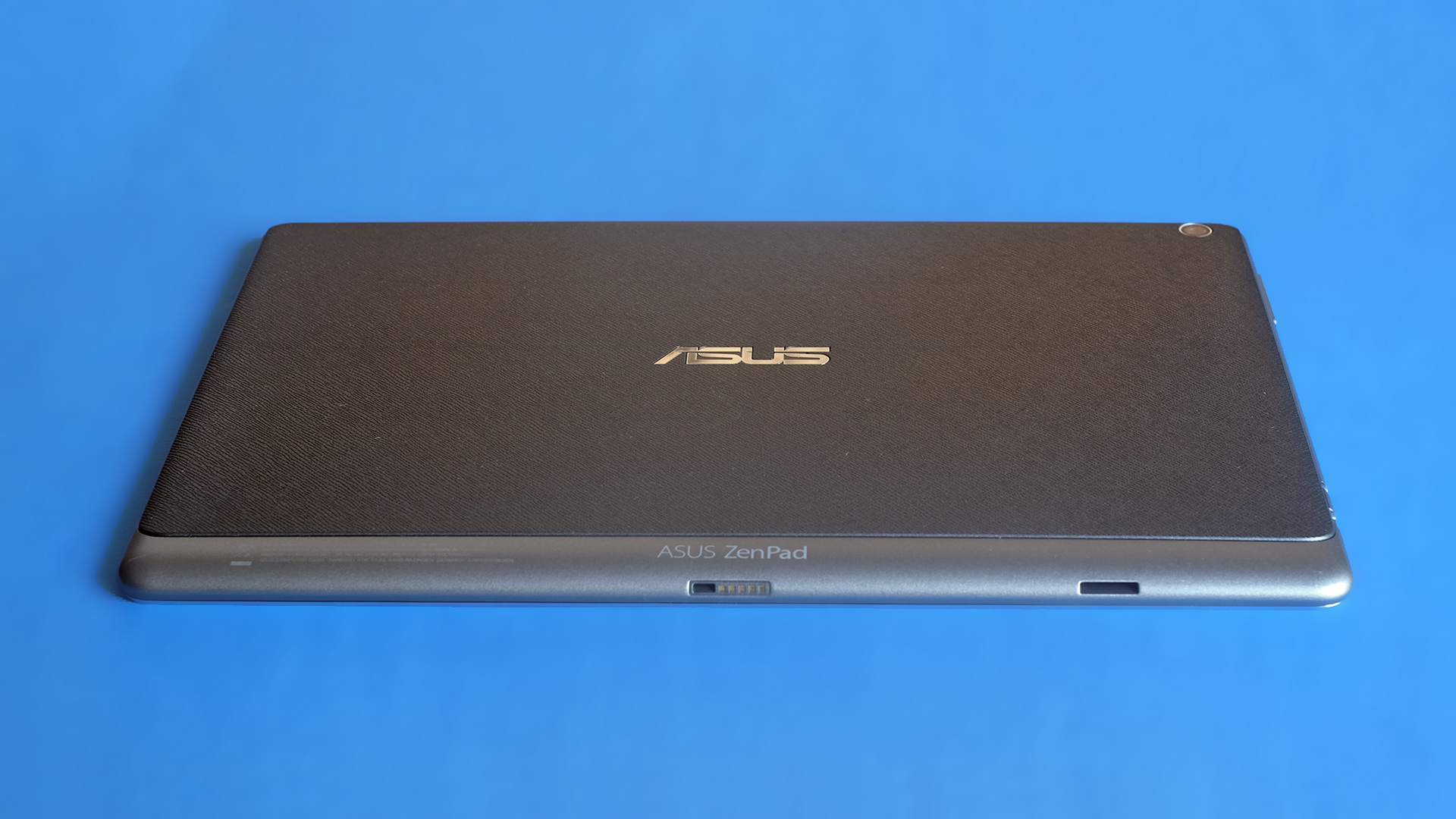
The slate uses a Mali MT720 MP2 graphics chip - a dual-core variant of one of Mali's third-generation Midgard units. This is not a remotely high-end setup from any perspective, but it is fast enough to do justice to a tablet with a low screen resolution like the Asus ZenPad 10 Z300M.
The slate's CPU is paired with 2GB of DDR3 memory: not super-fast but enough of the stuff to make Android 6.0 function fairly well, and the 16GB of internal storage isn't too slow either, writing at 64MB/s and reading at 89MB/s.
You do notice this isn't a high-end tablet in use, but as Asus has matched the core specs to the rest of the hardware fairly well, it displays its lack of power in mostly inoffensive ways. Apps that aren't already loaded into the system RAM take a little longer to load than on a higher-end device, and occasionally when you head back to the home screens there will be a brief moment before the icons pop in.
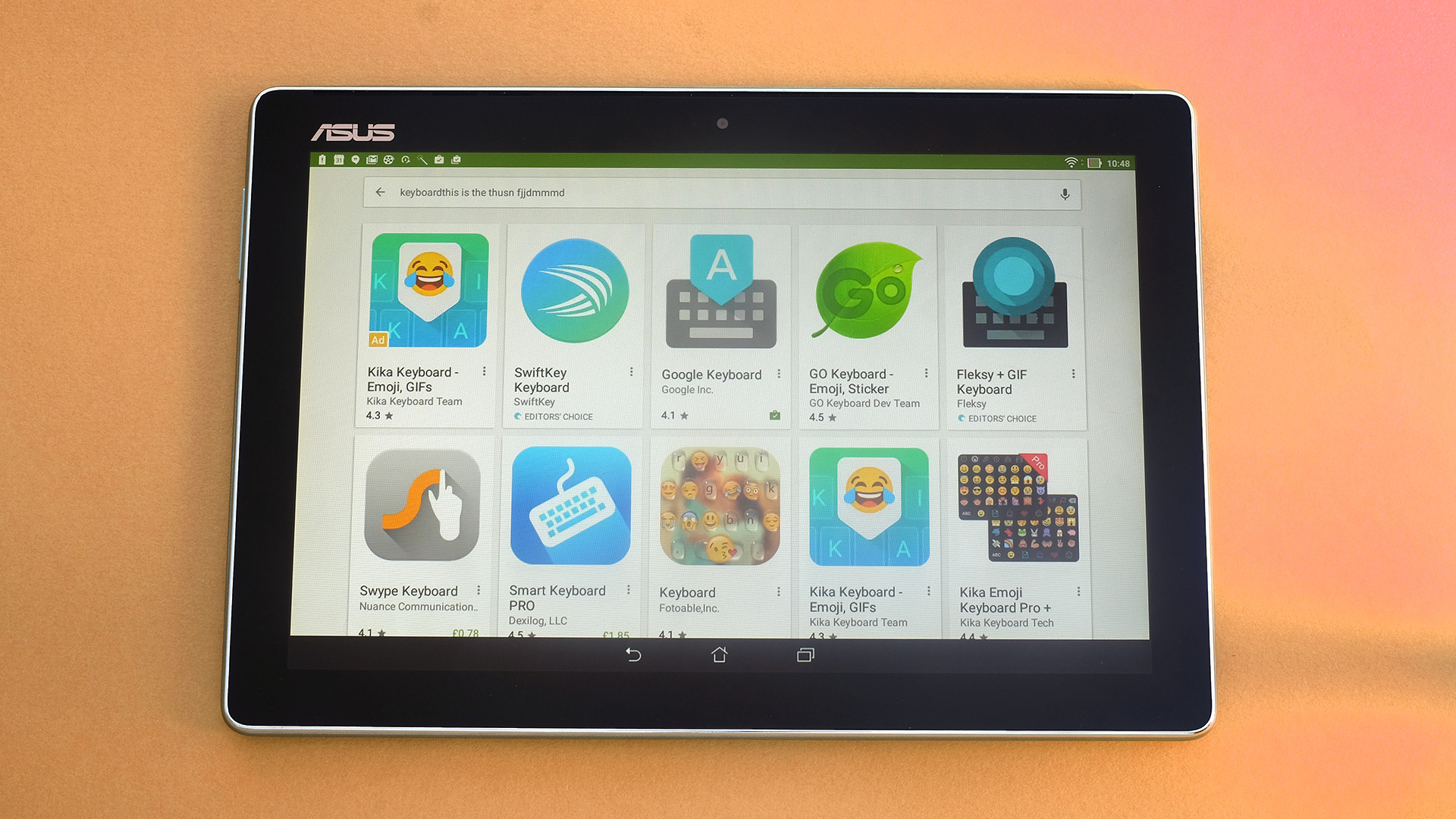
At first it seems there's a bit of typing lag to the Asus ZenPad 10 Z300M, a classic sign of questionable baseline performance, but it's actually just the keyboard 'click' sound effect not being properly synced to your key-presses.
This is down to the use of a custom Asus keyboard. We downloaded the standard Google keyboard and it got rid of the gnawing psychological nag of the laggy sounds. Of course, if you're going to use a tablet in public you should turn off any such tippy-tap noises anyway.
Current page: What's it like to use?
Prev Page Introduction, key features and design Next Page Battery life and cameraAndrew is a freelance journalist and has been writing and editing for some of the UK's top tech and lifestyle publications including TrustedReviews, Stuff, T3, TechRadar, Lifehacker and others.
